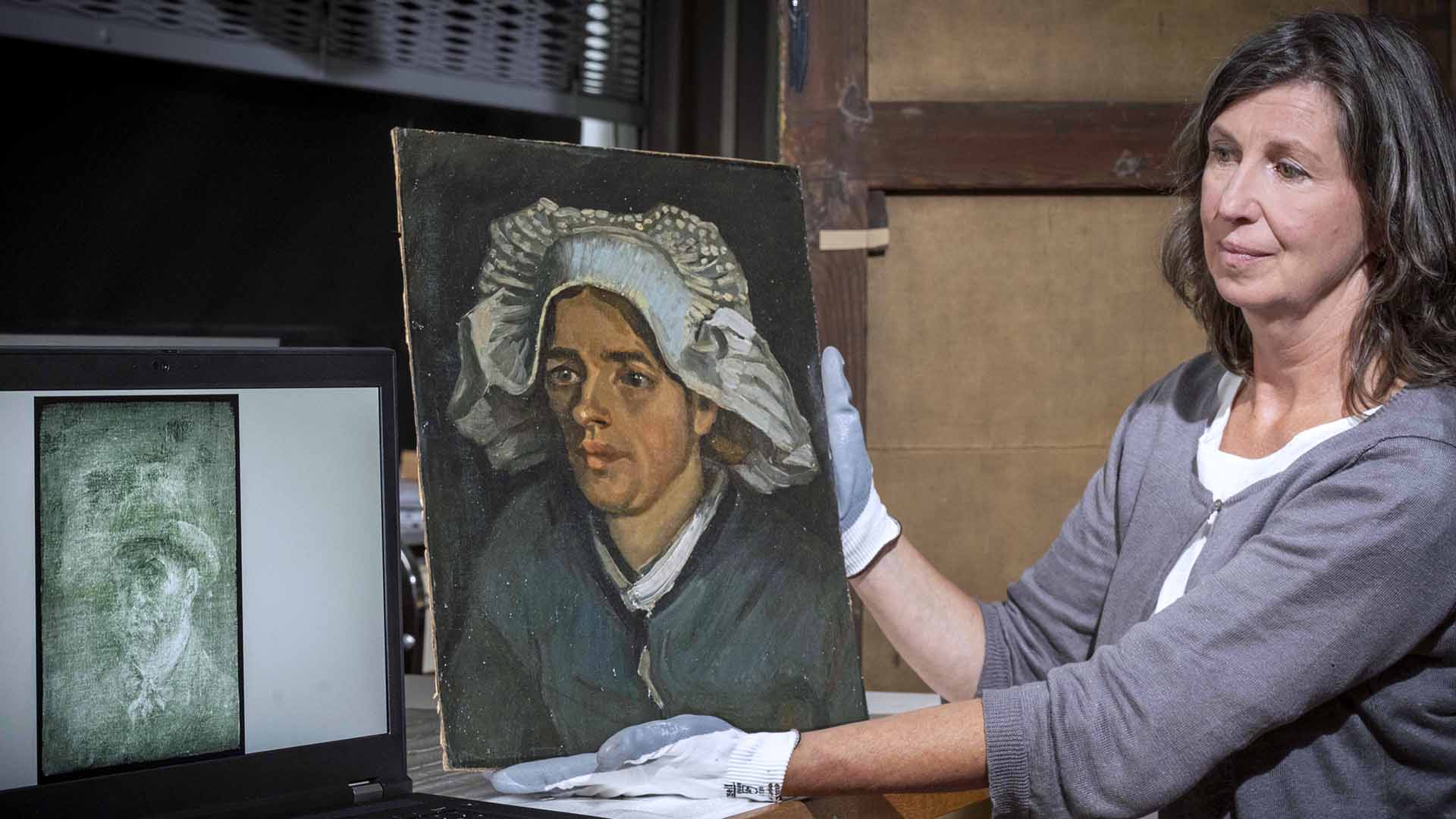Hidden Van Gogh self-portrait discovered under 'peasant woman' painting
An X-ray revealed Van Gogh's hidden face.

Conservators at the National Galleries of Scotland recently experienced quite a surprise after they X-rayed a painting by Vincent van Gogh. Hidden on the reverse side of the painting "Head of a Peasant Woman," which Van Gogh completed in 1885, was a previously unknown self-portrait of the Dutch painter staring back at them.
The hidden self-portrait had been obscured by layers of glue and cardboard that had been attached to the back of the canvas; museum officials suspect the materials were applied sometime during the early 20th century to help protect the artwork for an upcoming exhibition, National Galleries representatives said in a statement.
"It was absolutely thrilling," Lesley Stevenson, the museum's senior paintings conservator, told The Guardian about the discovery. "We weren't expecting much [of the] modest little painting" when they performed the scans, she said. But museum experts quickly revised their expectations when they looked at the X-rays. "We don't see much of the peasant woman, but what we have is the lead white, the much heavier pigment [Van Gogh] used for his face, showing up after the X-ray goes through the cardboard."
Related: Hidden artwork found beneath Picasso 'Blue Period' masterpiece
Van Gogh painted "Head of a Peasant Woman" as part of a series of works focused on the working-class residents of Nuenen, a small farming community in the southern portion of the Netherlands where he lived briefly in the 1880s. The woman in the painting is Gordina de Groot, a farm worker. She wears a flowing white headpiece, and her face is partially obscured by shadows.
In a letter that Van Gogh penned about the series in 1885 to Anton Kerssemakers, a friend and fellow artist, he described his fascination with his working-class subjects. "I'm working with almighty pleasure these days, for I would much rather paint figures than anything else," he wrote. "The heads of these women here with the white caps — it's difficult — but it's so eternally beautiful. It's precisely the chiaroscuro — the white and the part of the face in shadow, that has such a fine tone."
Van Gogh was also fond of creating self-portraits, producing about 20 paintings of himself toward the end of his lifetime while he was living in Paris, The Washington Post reported. Recreating his own image was a thrifty way for him to practice portraiture without spending money to hire models, according to The Washington Post.
Get the world’s most fascinating discoveries delivered straight to your inbox.
Art historians at the National Galleries hope that the hidden self-portrait may offer insights into the life of the troubled Van Gogh, who took his life with a revolver at the age of 37. The museum is currently investigating how to best remove the unwanted layers of protective materials without harming the painting.
The painting and an image of the self-portrait will be on display later this summer as part of the museum's upcoming A Taste for Impressionism exhibition, which runs from July 30 through Nov. 13.
Originally published on Live Science.
Jennifer Nalewicki is former Live Science staff writer and Salt Lake City-based journalist whose work has been featured in The New York Times, Smithsonian Magazine, Scientific American, Popular Mechanics and more. She covers several science topics from planet Earth to paleontology and archaeology to health and culture. Prior to freelancing, Jennifer held an Editor role at Time Inc. Jennifer has a bachelor's degree in Journalism from The University of Texas at Austin.


